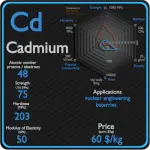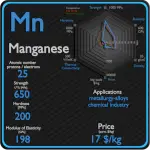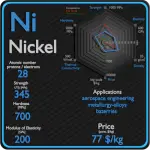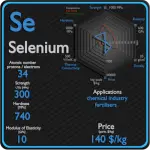This article contains comparison of key thermal and atomic properties of cobalt and zinc, two comparable chemical elements from the periodic table. It also contains basic descriptions and applications of both elements. Cobalt vs Zinc.
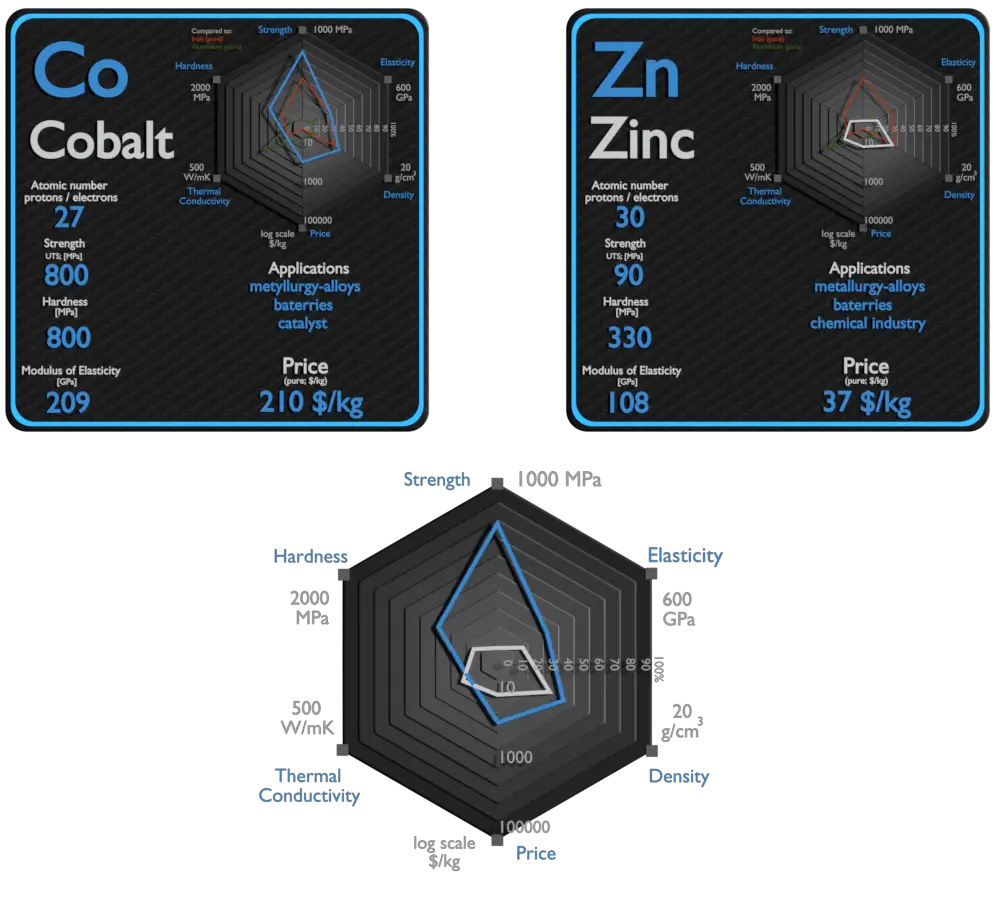
Cobalt and Zinc – About Elements
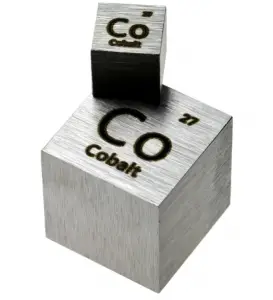

Source: www.luciteria.com
Cobalt and Zinc – Applications
Cobalt
Cobalt has been used in many industrial, commercial, and military applications. Cobalt is primarily used in lithium-ion batteries, and in the manufacture of magnetic, wear-resistant and high-strength alloys. Cobalt-based Superalloys. This class of alloys is relatively new. In 2006, Sato et al. discovered a new phase in the Co–Al–W system. Unlike other superalloys, cobalt-base alloys are characterized by a solid-solution-strengthened austenitic (fcc) matrix in which a small quantity of carbide is distributed. While not used commercially to the extent of Ni-based superalloys, alloying elements found in research Co-based alloys are C, Cr, W, Ni, Ti, Al, Ir, and Ta. They possess better weldability and thermal fatigue resistance as compared to nickel based alloy. Moreover, they have excellent corrosion resistance at high temperatures (980-1100 °C) because of their higher chromium contents. Several cobalt compounds are oxidation catalysts. Typical catalysts are the cobalt carboxylates (known as cobalt soaps). They are also used in paints, varnishes, and inks as “drying agents” through the oxidation of drying oils.
Zinc
Corrosion-resistant zinc plating of iron (hot-dip galvanizing) is the major application for zinc. Coating of steel constitutes the largest single use of zinc, but it is used in large tonnages in zinc alloy castings, as zinc dust and oxide, and in wrought zinc products. Galvanized steel is just plain carbon steel that has been coated with a thin zinc layer. The zinc protects iron by corroding first, but zinc corrodes at much lower rates than do steel. Other applications are in electrical batteries, small non-structural castings, and alloys such as brass. A variety of zinc compounds are commonly used, such as zinc carbonate and zinc gluconate (as dietary supplements), zinc chloride (in deodorants), zinc pyrithione (anti-dandruff shampoos), zinc sulfide (in luminescent paints), and dimethylzinc or diethylzinc in the organic laboratory. A key part of the modern materials world in which zinc finds itself is recycling. Zinc, in common with all metals (and unlike synthetic materials) can be recycled indefinitely without degradation.
Cobalt and Zinc – Comparison in Table
| Element | Cobalt | Zinc |
| Density | 8.9 g/cm3 | 7.14 g/cm3 |
| Ultimate Tensile Strength | 800 MPa | 90 MPa |
| Yield Strength | 220 MPa | 75 MPa |
| Young’s Modulus of Elasticity | 209 GPa | 108 GPa |
| Mohs Scale | 5 | 2.5 |
| Brinell Hardness | 800 MPa | 330 MPa |
| Vickers Hardness | 1040 MPa | N/A |
| Melting Point | 1495 °C | 419.53 °C |
| Boiling Point | 2927 °C | 907 °C |
| Thermal Conductivity | 100 W/mK | 116 W/mK |
| Thermal Expansion Coefficient | 13 µm/mK | 30.2 µm/mK |
| Specific Heat | 0.42 J/g K | 0.39 J/g K |
| Heat of Fusion | 16.19 kJ/mol | 7.322 kJ/mol |
| Heat of Vaporization | 376.5 kJ/mol | 115.3 kJ/mol |




